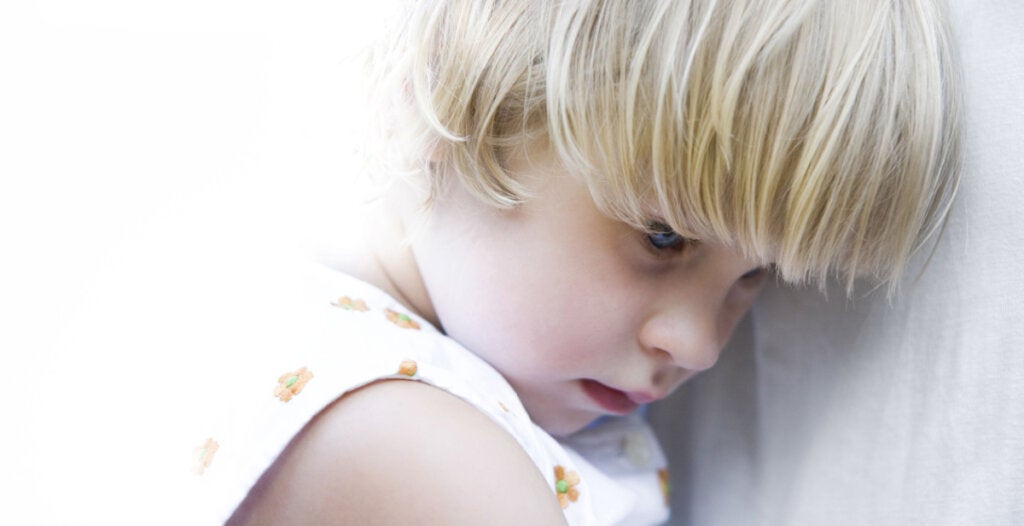The shy child demonstrates an attitude that could be considered defensive when they’re faced with people they don’t know. For instance, some hide behind their parents when a stranger wants to say hello while others look down and freeze. Furthermore, they feel uncomfortable in groups and are generally withdrawn in situations that are new to them.
Many parents often wonder if a shy child is born or made. Dr. Jerome Kagan conducted a series of studies in this regard. He was able to verify that around 20 percent of children are born with a predisposition toward shyness. However, when the environment is favorable, this trait diminishes over time until it almost disappears. Therefore, shyness is composed of both innate and acquired components.
Kagan points out that the opposite is true as well. For instance, a child may not necessarily be naturally shy but they become so due to the education they receive. Factors such as domestic violence or inappropriate parenting patterns favor this trait. So, what are the main mistakes that parents with shy children tend to make? Here are five of them.
“The goal should never be for the child to be the most sociable on the planet, but rather for them to be able to talk to children they know, greet family members, be able to establish a relationship with new children or participate moderately in small groups.”
-Álvaro Bilbao-
1. Forcing them to interact
This is one of the most frequent mistakes made by parents with a shy child. For some reason, they tend to believe that shyness is a trait that can be ‘extinguished’ by force. In fact, they often interpret shyness as an effect of weakness or excessive pampering.
However, forcing a child to interact can make shyness intensify or even lead to the development of a social phobia. While it’s important to expose the shy child to an open environment, it’s also important to control the degree to which it’s done, especially if this type of situation generates great anxiety in them.
2. Speaking for them
This is an overprotective behavior, intended to protect the shy child from the discomfort that interacting with others causes them. But, it has the same effect as forcing them to interact: it increases their shyness. Helping them build their own bubble won’t help them socialize more. Quite the opposite, in fact.
If a child doesn’t want to talk, it’s best not to pressure them or to speak for them. The best thing to do is for parents to socialize in a normal way so that the child sees a model of how to relate to others.
In fact, parents should try not to focus too much attention on their child. If the child asks something, they should give them time to answer. If they don’t reply, it’s best to move on without paying too much attention to their attitude.
3. Embarrassing them or comparing them with others
The last thing a shy child needs is for their parents to embarrass them. If they say things like Come on, say something” or “Don’t be silly, answer”, the child will feel even more inhibited at expressing themselves. Moreover, they may start to fear social situations.
Another way of embarrassing them is by comparing them to their siblings or to other children. This means invalidating them, increasing their feelings of insecurity, and hurting them. It’s worth remembering that every child is different and it’s humiliating for them to be compared to others.
4. Betraying them
A case similar to the previous one occurs when the parents, with the intention of helping the child, betray them in front of people who aren’t particularly close to them. For example, they might say “John’s really shy, so you better not ask him.” It’s as if they’re talking about a deficiency when, in reality, it’s simply a way of being for the child that’s as valid as any other.
The shy child tends to feel distressed when they attract too much attention or when the eyes of others are focused on them. They certainly don’t need a label on their forehead that acts as a stigma in front of others.

5. Filling their schedule with activities
Many parents are convinced that one way of facilitating the socialization of a shy child is by building an agenda with plenty of activities. For instance, piano lessons, swimming, painting, dance classes, etc.
However, this approach doesn’t usually work, especially when the child starts to show an interest in having an influence on how they need to organize their time, in a free and spontaneous way. All children need, whether they’re shy or not, a great deal of affection and support. They also require recognition and assessment of their progress. In the case of the shy child, they need to be encouraged to interact, not by being pressurized but by being motivated.
The post The Shy Child: Five Common Mistakes Often Made by Parents appeared first on Exploring your mind.



















Comments